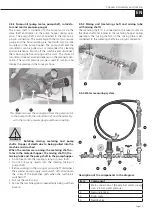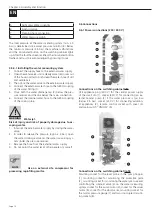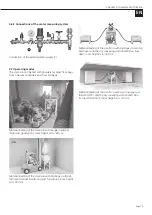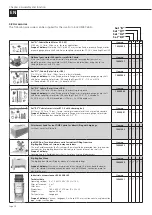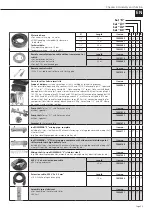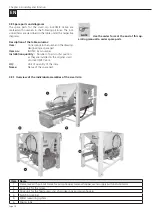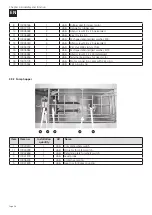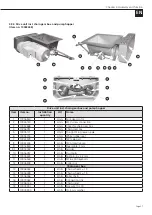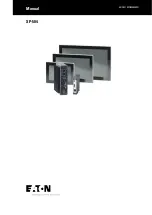
Page 12
EN
Chapter 4 Assembly and function
3.11 Rotor/Stator
Depending on the set select-
ed or area of application
Set “D”: D7-2.5S
Set "Ü1: 1R6
Set “Ü2”: 2R6
Set “RS”: R7 - 1.5
with clamping
strip
3.12 Noise emission
Sound power level LWA
78 dB (A)
3.13 Operating conditions
Temperature range
2 - 45 °C
Relative humidity, maximum
80 %
4 Assembly and function
4.1 Scope of delivery inoCOMB Cabrio
Item no. 10042612
Small silo consisting of:
• Frame
• Material container
• Switching cabinet
• Vibrating unit
Mixing unit consisting of:
• Gear motor 373 rpm
• Water fitting
• PU mixing tube inoPower Mix “S” with wide material
outlet
Pump unit consisting of:
• Extendable feed pump
• Stainless steel pump housing
• Gear motor frequency controlled
• Toolbox
Set “D” Cabrio
for spray applications (22 l / 40 bar)
Item no. 10043990*
Set “Ü1” Cabrio
for industrial screeds (100 l / 15 bar)
Item no. 10043988*
Set “Ü2” Cabrio
for floor levelling compounds (100 l / 30 bar)
Item no. 10043989*
Set “RS” Cabrio
for coarse-grained material (50 l / 15 bar)
Item no. 10043991*
_____________________________
* For scope of delivery, see accessories
4.2 Functionality
The small silo inoCOMB Cabrio is used for mixing and con-
veying pumpable (mineral or organic products) materials up
to approx. 8 mm grain size. Dry mortar, screed material or
floor levelling compounds pre-mixed by the material manu-
facturer can be used. The material hopper of the small silo
can optionally be filled with bagged material, with one-way
containers or with big bags. During operation, the dry ma-
terial is conveyed from the material hopper into the mixing
pipe via the metering shaft. In the mixing tube, the dry ma-
terial − with the addition of water − is mixed with the mix-
ing shaft to form a homogeneous, pasty or liquid product.
At the outer end of the mixing tube, the mixed material falls
directly into the pump hopper. In the pump hopper, the ma-
terial is transported to the pump unit (rotor/stator) via the
pump shaft. The material is pumped from there via the ma-
terial hoses to the processing location. There, it is applied to
walls and ceilings with appropriate spray/adhesive guns or a
reprofiling sprayer or poured directly onto the floor.

















